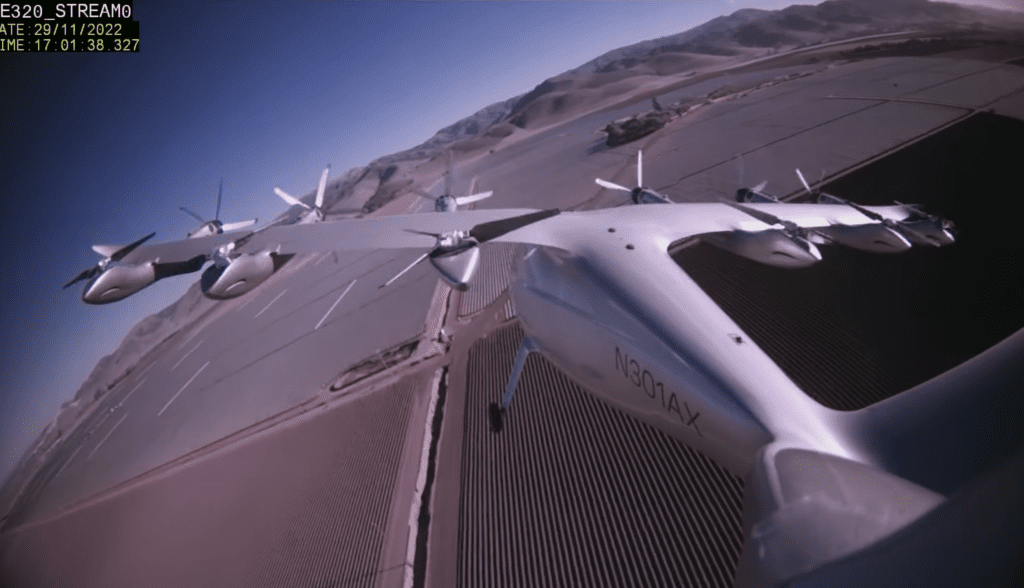
On Tuesday, Nov. 29, Archer completed Maker’s first full transition flight after several months of intensive flight testing. (Photo: Archer Aviation)
Maker, the demonstrator aircraft developed by Archer Aviation, made its first successful transition from vertical lift to full wing-borne flight last week. Maker is a full-scale electric vertical take-off and landing (eVTOL) aircraft with 12 propellers attached to six booms on a fixed wing. The demonstrator aircraft flew at a speed of 105 miles per hour (91 knots).
View the video of Maker’s transition flight here >>
Archer’s Maker aircraft utilizes a 12-tilt-6 configuration, as does its production eVTOL aircraft, Midnight. The 12-tilt-6 configuration means that the vehicles feature six propellers that are tilted forward in cruise position in order to provide propulsion during forward flight. All 12 of the aircraft’s propellers generate vertical lift during take-off and landing.
The team officially unveiled the Midnight aircraft in mid-November. Archer also revealed plans to build a manufacturing facility in Georgia near the Covington Municipal Airport. The facility is expected to start production in 2024 and be able to produce up to 650 eVTOLs each year.

Archer’s production aircraft, Midnight (Photo: Archer Aviation)
In November, Archer also announced suppliers for Midnight’s flight deck and battery cells. Garmin has agreed to supply the G3000 integrated flight deck, and Molicel signed a memorandum of understanding to produce battery cells to power the eVTOL.
Another leading eVTOL developer, Lilium, achieved a full transition from hover to wing-borne flight with its technology demonstrator in September. Its Phoenix 2 aircraft performed the full transition on the main wings as well as the canard wings. Lilium has been conducting flight tests with the Phoenix 2 in Spain since this spring. The team achieved its first main wing transition flight in June.
Archer expects to certify its aircraft with the Federal Aviation Administration in late 2024. “The data and experience we’ve gathered from Maker’s rigorous flight testing program has been invaluable to the development and certification path of Midnight,” remarked Adam Goldstein, Archer’s founder and CEO, regarding Maker’s successful transition flight.

“During this flight, Maker’s tilt propellers were locked in cruise position for the first time and the aircraft flew at a calibrated airspeed of 91 knots.” (Photo: Archer Aviation)
Dr. Geoff Bower, Archer’s Chief Engineer, also shared in a blog post that achieving transition is a significant milestone for any aircraft that performs vertical take-off and landing. “The power required to fly Maker during wingborne flight is about three times smaller than during hover. Flying the majority of a trip in wingborne flight is critical to maximizing aircraft efficiency; in other words, carrying a payload at a high speed for a useful range,” wrote Dr. Bower.

Pictured above is an OVERFLOW CFD simulation showing the aerodynamic interactions between propellers and airframe during a transition. “The transition between hover and wingborne flight is traditionally also the most difficult to fly due to the rapidly changing aircraft configuration, hard to predict aerodynamic interaction effects, changing flight dynamics, and the associated control law changes.” – Chief Engineer Dr. Geoff Bower (Photo: Archer Aviation)